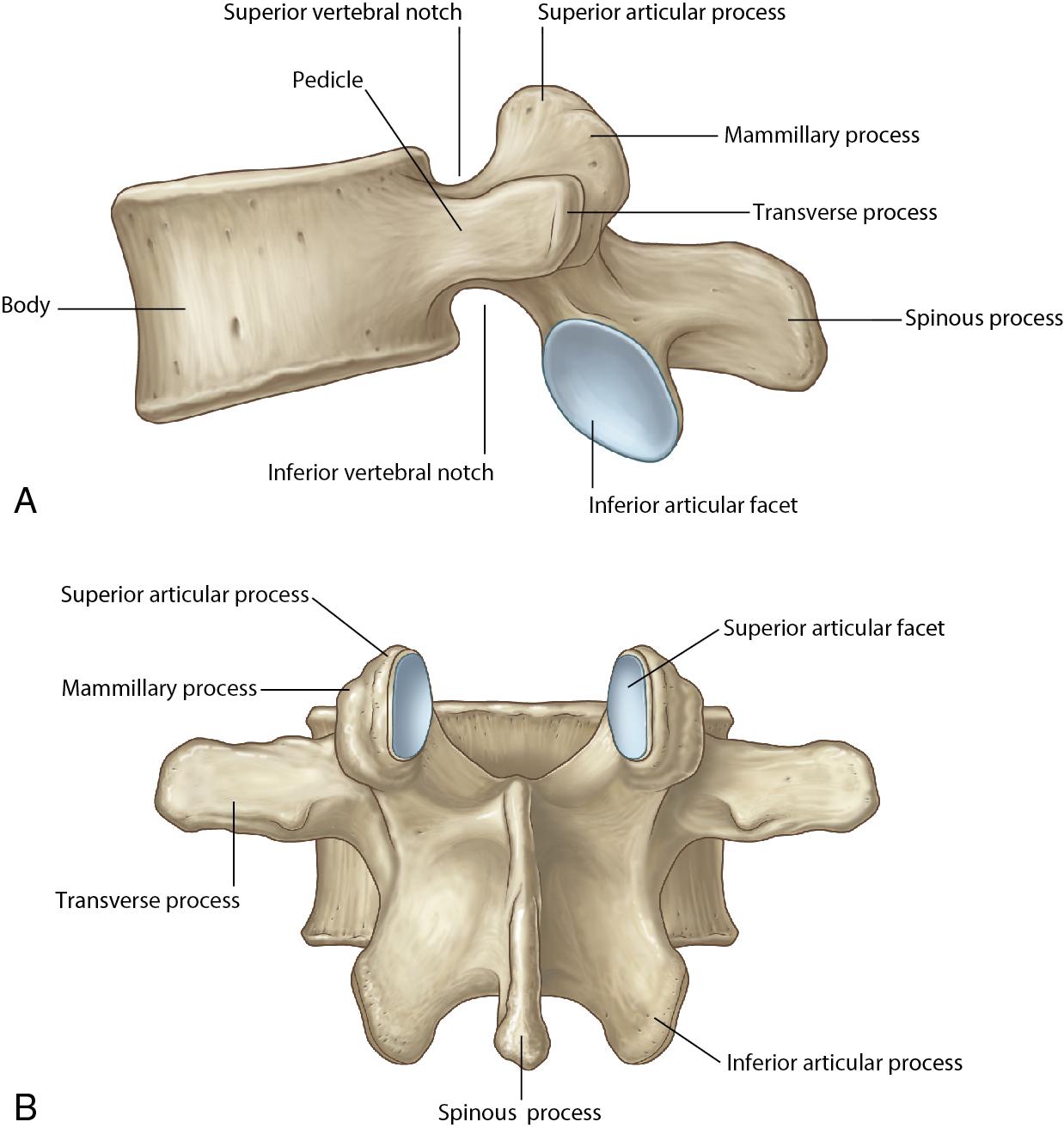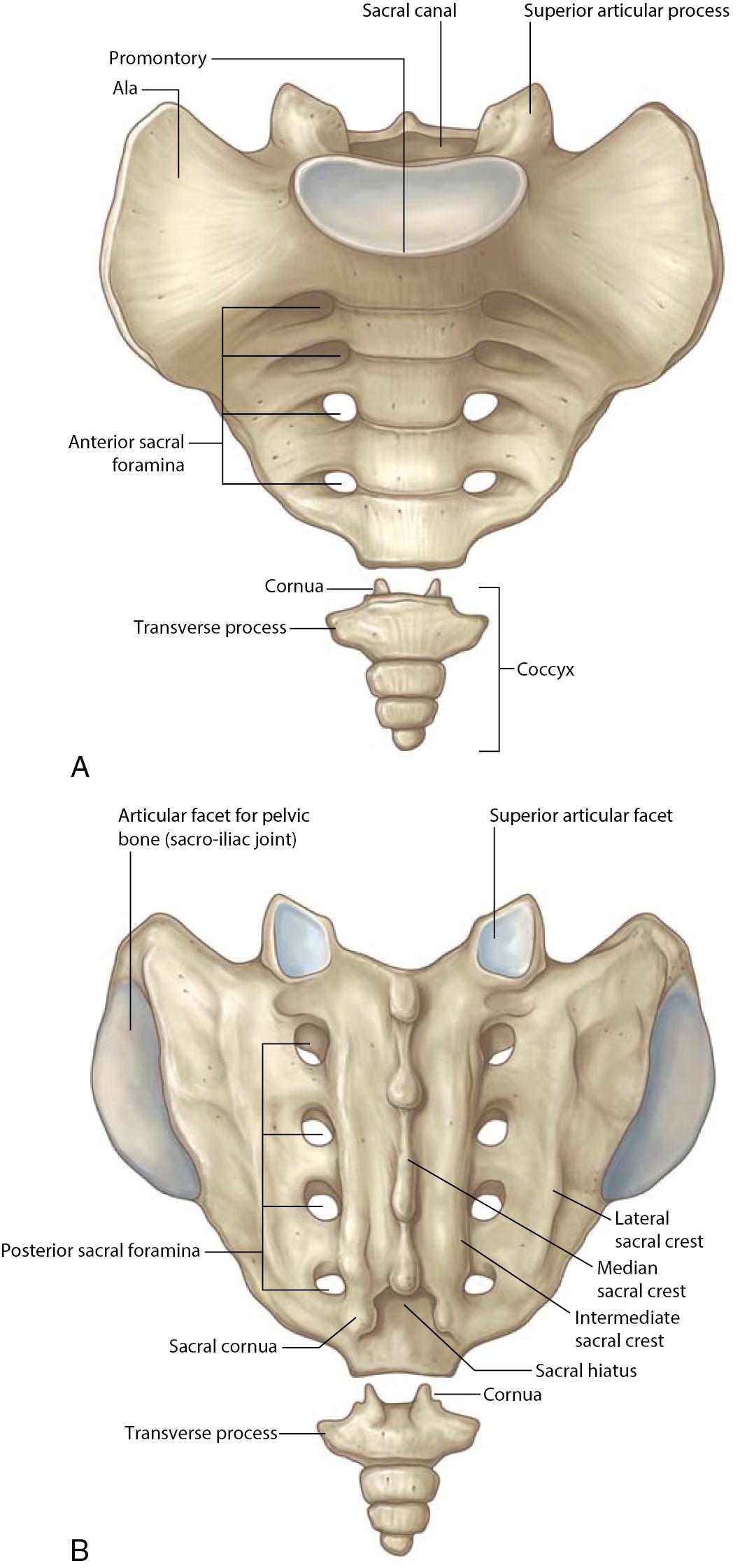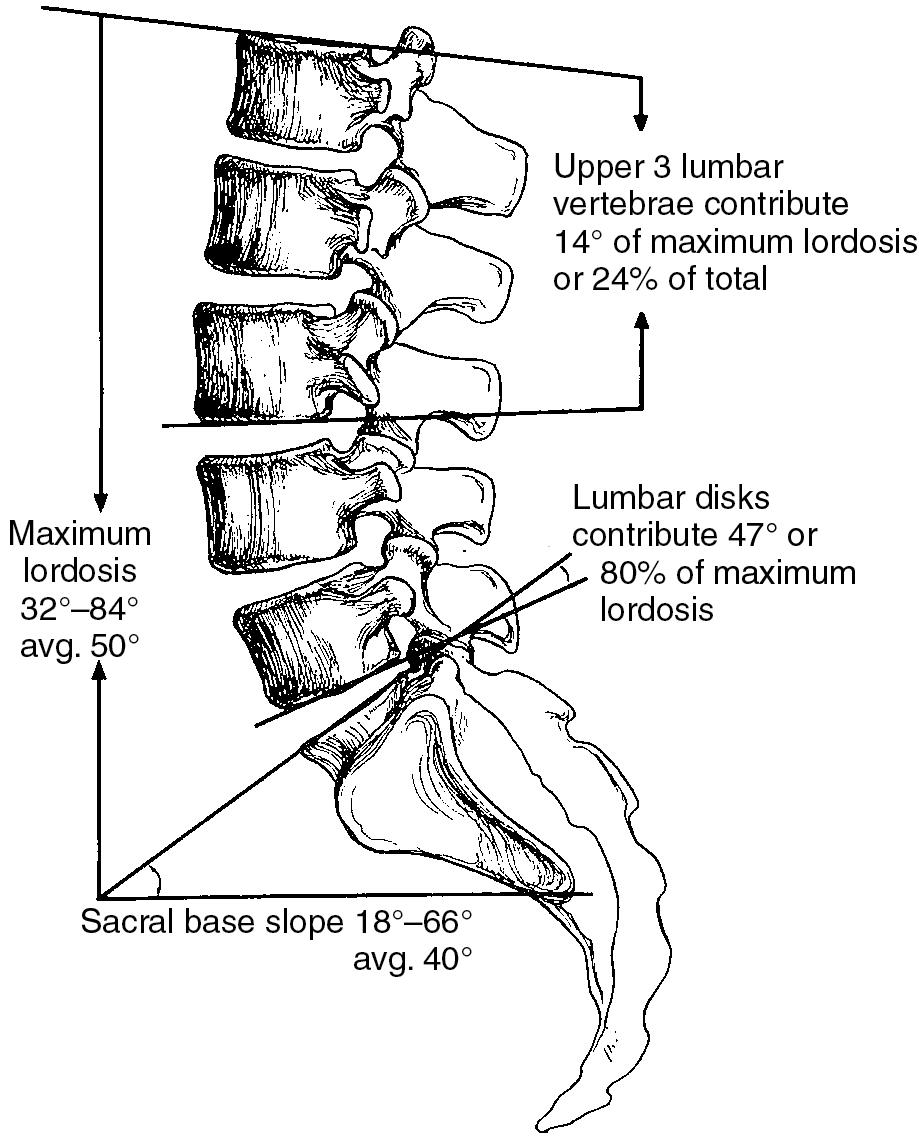Physical Address
304 North Cardinal St.
Dorchester Center, MA 02124
The vertebral bodies are kidney shaped with the transverse diameter exceeding the anteroposterior diameter ( Fig. 3.1 ). The vertebral body may be divided by an imaginary line passing beneath the pedicles into an upper and lower half. Six posterior elements attach to each lumbar vertebral body. Three structures lie above this imaginary line (superior articular process, transverse process, pedicle) and three structures lie below (lamina, inferior articular process, spinous process). The pars interarticularis is located along this imaginary dividing line. The transverse processes are long and thin except at L5, where they are thick and broad and possess ligamentous attachments to the pelvis. The five lumbar vertebral bodies increase in size from L1 to L5.

The pars interarticularis is an area of force concentration and is subject to failure with repetitive stress. A defect in the bony arch in this location is termed spondylolysis. The pars interarticularis is the concave lateral part of the lamina that connects the superior and inferior articular processes. The medial border of the pedicle is in line with the lateral border of the pars between L1 and L4. At L5, the lateral border of the pars marks the middle of the pedicle.
The pedicle connects the posterior spinal elements (lamina, transverse processes, superior articular processes or facets) to the vertebral body. Lumbar pedicle widths are largest at L5 (18 mm) and smallest in the upper lumbar region at L1 (6 mm). The pedicles in the lumbar spine possess a slight medial inclination, which decreases from distal to proximal levels. The pedicles angle medially 30° at L5 and 12° at L1.
The sacrum is a triangular structure formed from five fused sacral vertebrae ( Fig. 3.2 ). The S1 pedicle is the largest pedicle in the body. The sacral promontory is the upper anterior border of the first sacral body. The sacral ala (lateral sacral masses) are bilateral structures formed by the union of vestigial costal elements and the transverse processes of the first sacral vertebra. Four intervertebral foramina give rise to ventral and dorsal sacral foramina. Landmarks on the dorsal surface of the sacrum include median, intermediate, and lateral sacral crests which represent fused spinous, articular, and transverse processes respectively. The sacral cornua (horns), formed by remnants of the inferior articular processes, are the most caudal part of the intermediate sacral crest and articulate with the coccygeal cornua. The sacral cornua serve as a landmark for locating the sacral hiatus, an opening in the dorsal aspect of the sacrum due to absence of the fourth and fifth sacral lamina.

The coccyx is a triangular structure that consists of three, four, or five fused coccygeal vertebrae. The coccyx articulates with the inferior aspect of the sacrum.
The inferior articular process of the cephalad vertebra is located posterior and medial to the superior articular process of the caudad vertebrae. The upper- and mid-lumbar facet joints are oriented in the sagittal plane. This orientation allows significant flexion-extension motion in this region but restricts rotation and lateral bending. The facet joints at L5–S1 are oriented in the coronal plane, thereby permitting rotation and resisting anterior-posterior translation.
The structures that provide articulations between the lumbar vertebral bodies are the same as in the thoracic region: (1) anterior longitudinal ligament, (2) posterior longitudinal ligament, and (3) intervertebral disc.
The anatomic elements that provide articulations between the adjacent lumbar vertebral arches are the same as in the thoracic region: (1) articular capsules, (2) ligamentum flavum, (3) supraspinous ligaments, (4) interspinous ligaments, and (5) intertransverse ligaments.
Specialized ligaments connect L5 and the sacrum:
Iliolumbar ligament, which arises from the anteroinferior part of the transverse process of the fifth lumbar vertebra and passes inferiorly and laterally to blend with the anterior sacroiliac ligament at the base of the sacrum as well as the inner surface of the ilium.
Lumbosacral ligament, which spans from the transverse processes of L5 to the anterosuperior region of the sacral ala and body of S1.
The normal lumbar spine is lordotic (sagittal curve with its convexity located anteriorly). Normal lumbar lordosis (L1–S1) ranges from 30° to 80°, with a mean lordosis of 50°. Normal lumbar lordosis generally begins at L1–L2 and gradually increases at each distal level toward the sacrum. The apex of lumbar lordosis is normally located at the L3–L4 disc space. Normally, two-thirds of lumbar lordosis is located between L4 and S1 and one-third between L1 and L3 ( Fig. 3.3 ).

Become a Clinical Tree membership for Full access and enjoy Unlimited articles
If you are a member. Log in here